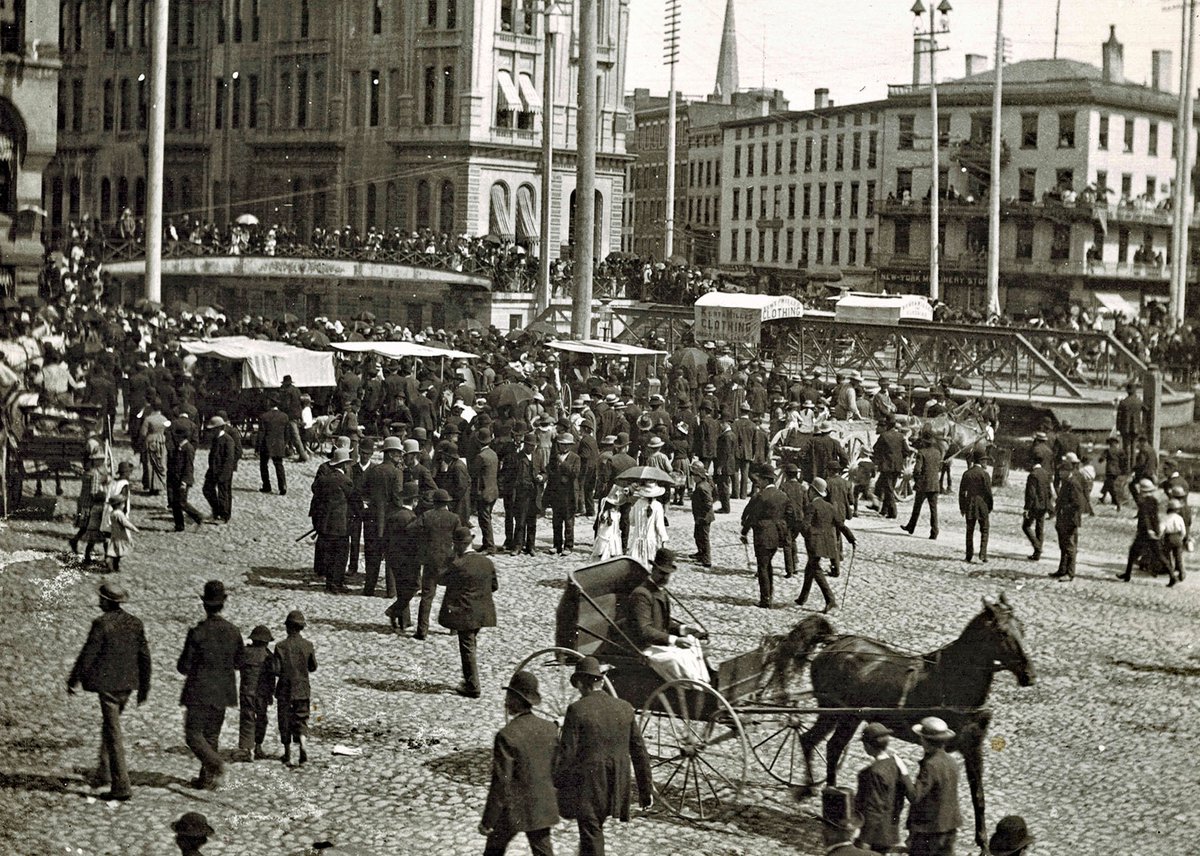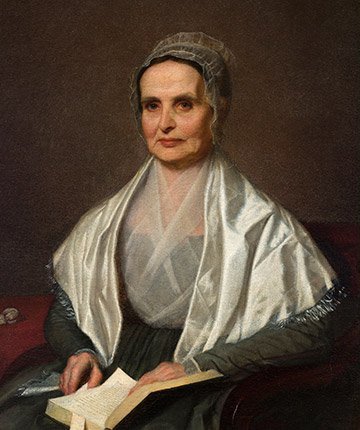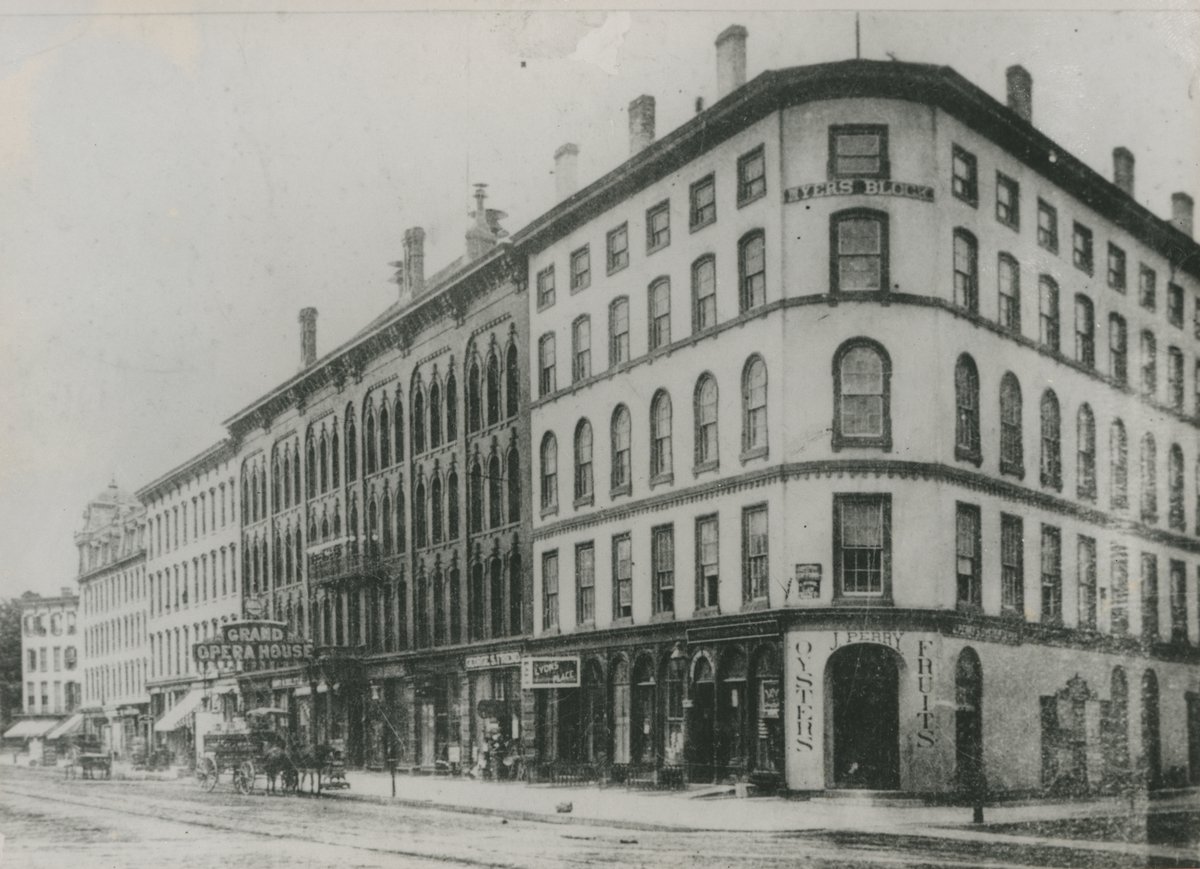Taking Root
Central New York as Fertile Ground for Syracuse University

The Erie Canal (center of photo, taken late 1890s) made Syracuse a thriving crossroads of goods and ideas. Photo courtesy Onondaga Historical Association.
The 1800s marked a century of rapid economic growth and occupational transition in the United States. The country’s population grew by an average of one-third each decade, and jobs during the Industrial Revolution transitioned from being agricultural to urbanized. According to the U.S. Census, only 2.6% of laborers worked in farming in 1900, compared to 90% in 1790. Higher-paying industrial jobs and the prospect of a better life had people, and ideas, flooding into America’s large cities.
“Syracuse was one of the cities on the make in the middle of the 19th century,” says Robert Searing G’16, associate curator of history for the Syracuse-area Onondaga Historical Association. A booming salt industry around nearby Onondaga Lake brought in wealthy investors, who in turn helped to spur the building of the Erie Canal, which was completed in 1825. The city being a central stop on the canal, which ran from the Hudson River in Albany all the way across the state to Lake Erie in Buffalo, and from there to the Midwest, allowed for not only the movement of goods, but also of new ideas—and ideals.
Visionaries and activists

Suffragist Lucretia Mott
“Syracuse became a real center for progressives, social reformers, religious reformers, the temperance movement and the suffrage movement,” Searing says. “This was a place where fortunes were being made, where major social advancements were taking place. Some of the most visionary activist thinkers of their day were here with regularity, including Susan B. Anthony, Frederick Douglass, Jermain Loguen and William Lloyd Garrison. It was a very cosmopolitan place in the middle of the 19th century.”
The city of Syracuse, which was incorporated in 1848, was in the center of both the women’s suffrage movement and the fight to end slavery. Early suffragists like Lucretia Mott, Elizabeth Cady Stanton and Matilda Joslyn Gage were influenced by the Haudenosaunee, an alliance of six Native American nations whose ancestral home covers much of present-day Upstate New York, including today’s Syracuse area. Early pioneers of women’s rights drew inspiration from the women of those six Indigenous nations, who lived in a matrilineal society where responsibilities were shared equally regarding family, government and their economy.
During the 19th century, the Syracuse area was known as “the great central depot” for the Underground Railroad—a network of secret routes helping enslaved African Americans escape from the South to the free northern states and Canada—with Syracuse resident the Rev. Jermain Loguen offering sanctuary in his home on East Genesee Street and Harriet Tubman doing the same at her residence in Auburn, New York, a city just to the west.
A progressive hub
That proximity to the Underground Railroad and the women's suffrage movement headquartered in nearby Seneca Falls, New York, along with its central location in the then-most populous state in the country, also made Syracuse into a lively convention hub.
In fact, most of the state Democratic conventions would take place in Syracuse in the mid-1800s, along with the Liberty Party’s national convention in 1852. The Liberty Party was perhaps the most progressive anti-slavery party of its day and its convention in Syracuse was attended by prominent abolitionists Gerrit Smith and Rev. Loguen, whose daughter Sarah Loguen Fraser was the first woman to receive a medical degree from the College of Medicine at Syracuse University (now SUNY Upstate). In that same year, Syracuse also hosted the National Women’s Rights Convention, notably attended by Lucretia Mott, Susan B. Anthony and Matilda Joslyn Gage.
Another annual event taking place in Syracuse at the time was the Methodist State Convention. It was here, at a meeting in February 1870, that a resolution was passed to erect a new university in the city of Syracuse. For its Methodist founders, building a college in a growing, centrally located and progressive city made Syracuse the perfect environment for an institution to grow and prosper.
“At that time, you would have found a city bustling with activity,” says Searing. “You would have seen magnificent structures, like the Gridley Building (built in 1867), as you were coming in on the Erie Canal through Clinton Square. It would have been quite a thing to see, particularly had you come from a more rural area.” The Gridley building, designed by architect Horatio Nelson White, is made of Onondaga limestone. White adapted the same Second Empire style architecture to his design of the University’s Hall of Languages.
Building a university
The Rev. Jesse T. Peck, who was elected president of the newly formed Syracuse University Board of Trustees, pledged funds along with Eliphalet Remington Jr. (son of Remington Arms Co. L.L.C. founder Eliphalet Remington Sr.), Francis Root, the Rev. J.H. Crawford and Judge George F. Comstock to help endow the university. On March 4, 1870, Hon. George F. Comstock petitioned the state Legislature for a charter and on March 30, 1870, the Secretary of State for New York certified the articles of incorporation for Syracuse University. The board now turned its focus to securing a location for the new university. Peck suggested the 50-acre Comstock Plot in southeastern Syracuse. In an 1872 article appearing in Syracuse University’s first student newspaper, The University Herald, a writer describes the picturesque view looking out over the city from the northwest corner of campus, “North are the heights, where James Street, noted for its beauty, shows its elegant villas and mansions. Northwest, (Onondaga) Lake lies like a pearl in a casket of green. In a nearer view at our feet, is the city, just now embowered in a seeming forest of shade. On the west, are the beautiful heights of the Onondaga hills...”

The Myers Block, shown here in the 1870s, was Syracuse University’s first home.
Work began at the location, which would come to be known as “Piety Hill” due to its Methodist origins, in 1871. The first building on campus was the Hall of Languages, completed in 1873, which at the time, “(was) as fine a structure as the American college world can boast,” according to The University Herald. The iconic and imposing Second Empire-style edifice quickly became symbolic of Syracuse University.
Taking root
But even before the Hall of Languages was completed in 1873, the Board of Trustees decided to accept the first student body to the College of Liberal Arts, now A&S, in September 1871. The upper floors of the Myers Block, in downtown Syracuse, were rented as a temporary campus with the second floor holding classrooms, a library, a reading room and faculty offices; the third floor holding classrooms and a chemistry laboratory; and the fourth floor holding a chapel and assembly room. The first liberal arts curriculum included courses in algebra, geometry, Latin, Greek, history, physiology, education and rhetoric. Forty-one men and women comprised the inaugural class, becoming the first of many generations of Syracuse students.
The seed had been planted. From this fertile ground a great research institution was taking root.

